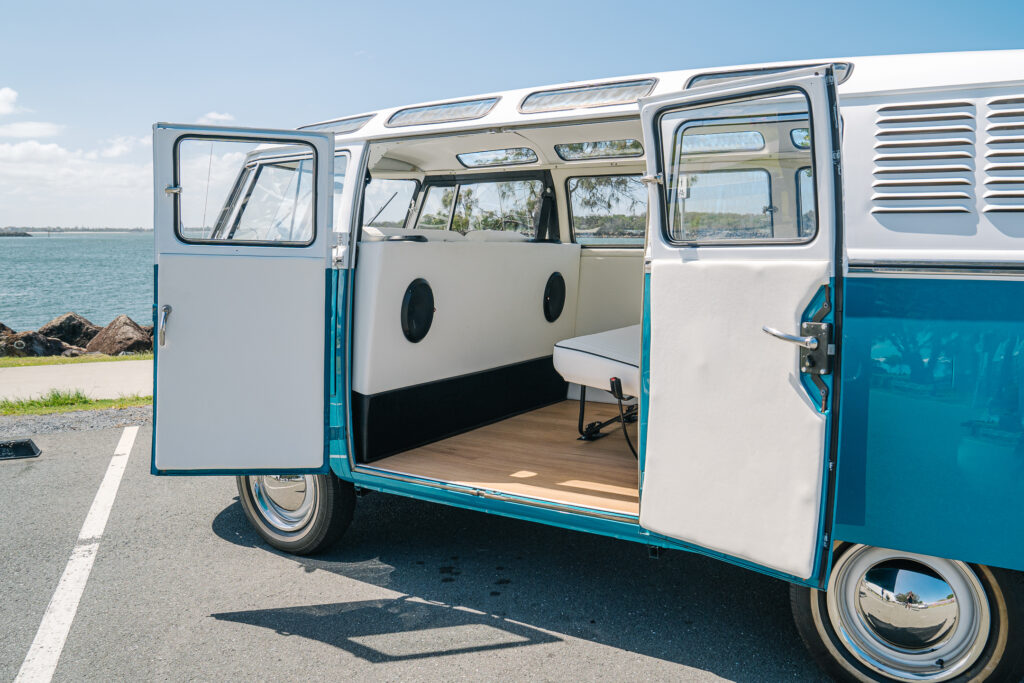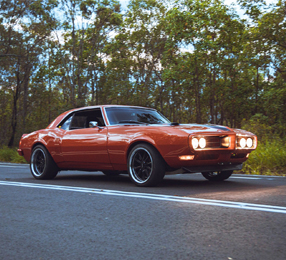Welcome to Patty’s Garage [DIY Car Repairs]
G’day, mate! Patty here from Classics for a Cause. Welcome to my garage where I’ll be chatting about all things DIY car repairs for classic cars and, really, any old cars you’re keen to work on in your spare time.
If you’re anything like me, you bloody love classic cars! Old cars from the 60s and 70s are in a league of their own when you compare them to what we have today. There’s something irreplaceable about the loud engines and heavy metal that make these classics, well… classics.
Keen to learn more about DIY car repairs and how to fix your classic old cars?
Sweet as! Let’s go!
Benefits of DIY Car Repairs
First thing’s first, why on earth would you want to do your own car repairs if you could easily just pay someone else to get it done? Well, if you’re a serious car nut, you get it. Your garage is your happy place and working on old cars is as thrilling as anything.
But, even if you’re not a huge car enthusiast and you just want to find a useful hobby or learn something new, there are heaps of benefits of DIY car repairs and learning to maintain your vehicles.
Especially if you own classic cars or old cars that are harder to service, it might actually be necessary that you learn how to work on your cars.
In my view, the top benefits of DIY car repair work include:
- Saving money
- Saving time
- Learning new skills
- Customising your cars
Let’s get into each of these specific benefits in a bit more detail, shall we?

Save Money
Don’t be a drongo and waste your money on simple car repairs you can do them on your own. Learning how to change a tyre, do an oil change and fix your upholstery can save you heaps of cash in the long run.
Even though our Classics for a Cause VIP Members get discounts on premium auto care services throughout Australia (join here, mate!), the truth is that unless you’re looking at some serious repairs, a lot of it you can do on a Saturday arvo, no dramas!
Most car repair shops will upcharge you on parts and then blast you with labour costs. But, no shame in that – professionals have to earn a bloody living!
However, for simple fixes, saving money on parts and skipping the fee for labour is a major reason why doing your own repairs is a good idea.
Not to mention, simply knowing what’s wrong with your car – even if you do take it into the shop – means you won’t get scammed into paying more than it’s worth on a repair. Knowledge is power!
So, if you want to save your cash on car repairs, learn to do them yourself and you’ll thank me later.
Save Time
While you might be thinking, Patty… no way is doing it myself going to save me more time than getting a mechanic to work on my car for me. And I get it, that makes sense on the surface.
But think about it…
Say you live out in woop woop and have the drive into the nearest town just to find an available mechanic. That’s hours lost right then and there.
Plus, waiting for them to order the parts and do the actual job can take days or even weeks, or more! Especially if you own a classic car that requires obscure parts or specific skills, it can take even longer to get the proper fix.
Overall, you’re saving heaps of time, especially if you live far from a high-quality mechanic or car repair shop or you own an old car requiring odd parts. Best to do it on your own and save yourself time.
Learn New Skills
Besides saving money and saving time, the next benefit of DIY car repair is the fact that you’ll learn new skills along the way. It’s bloody empowering to know that if something breaks down or needs a quick fix, you’ve got the chops to get ‘er done.
Can you even call yourself a classic car enthusiast if you don’t know how the nuts and bolts come together?
Ok, yes – you can be a classic car junkie and not necessarily have the interest in fixing them up. But for most of us, spending time in the garage is where we feel at home. Oath!
Plus, knowing what you’re doing under the hood offers mad bragging rights and you can even help out your mates when they’re in a pinch. New neighbourhood mechanic comin’ atchya!
How good would it be to spend your nights and weekends fixing cars, slugging a cold one with some Accadacca blaring in the background? In short, when you learn to do it yourself, you’ll get some mad skills from the process.
Customise Your Cars
Last but certainly not least, a major benefit of doing all your car repairs yourself is that you get full control over how you customise your car.
Want red leather upholstery on your seats? Bloody oath!
Want to soup up your engine to make it sound just the way you like? Oh yea!
Want to get on the road now but the beaut needs a quick little paint job to fix a scratch? No dramas!
One of the best parts about owning old cars or classic cars is the fact that not many other people are driving them. It feels good to turn heads and drive something truly unique, even if you’re just heading up to Woolies or picking up your kids from kindy.
If you love cars, it means you probably love to make sure it looks good when the tyres hit the pavement.
The same way fashionistas love to dress in a custom wardrobe and would do well to learn how to sew, classic car enthusiasts would do well to do DIY car repairs to customise their cars any way they like, when they like.
Downsides of DIY Car Repairs
Ok, ok – while I’m defo a fan of DIY car repairs for all the reasons mentioned, I’d be a fool not to also mention some of the potential downsides.
After all, we wouldn’t want you going off, becoming a DIY wizard and then blaming me because you didn’t understand the risks. That’s not on!
So, what are the major downsides of doing DIY car repairs? From my perspective they include:
- Warranty issues
- Trouble with insurance
- Safety concerns
- Requires spare time

At the end of the day, we want all of our Members to stay safe out there on the road and remain protected by insurance and whatnot. In other words, it’s worth it to understand the potential pitfalls of doing all your own car repairs and find ways to mitigate any risks from the start.
Let’s get into it, hey?
Warranty Issues
So, most old cars and classics won’t have a warranty at all. Sorry, mate. But if you’re doing your own repairs on a newer car, this is a potential downside you’ll want to think about.
When you get your car repaired by a qualified mechanic, it likely won’t affect your warranty.
However, if you do it yourself, there’s a good chance that it will render your warranty null and void because the policymaker will have no way of knowing whether the issue was the car or your dodgy repair job.
Again, not a deal-breaker if you’re like me and mostly work on older cars, but if you’re simply interested in DIY car repairs for general purposes, this is something to think about before you start tinkering around.
Trouble with Insurance
In most countries, driving any automobile without insurance is illegal. And for good reason, because you won’t want to deal with an accident without the insurance to back you up. You’d be devo!
So, before you start doing any DIY car repairs, especially when it comes to modifications and customisations, check with your insurance provider to make sure you’ll still be covered afterwards
The last thing you want is a souped-up 1967 Ford Mustang that you did all yourself only to find out the hard way that it’s not roadworthy according to your insurance policy.
So, this is me warning you that it’s much easier to check with your insurance people before you start on a massive custom project. Again, you’ll thank me later.
Safety Concerns
Another reason DIY car repairs can get a little iffy is when it comes to safety concerns. Driving itself is pretty dangerous even in the best of cars.
Some stats say that 2 out of every 3 people will experience an injury-inducing car accident in their lifetimes, mostly due to distracted or dangerous driving.
That’s a pretty unsettling stat and doesn’t even take into account faulty auto repairs. In other words, driving already isn’t the safest activity we undertake as humans so you don’t want a tyre falling off to make things worse.
So, if and when you do embark on DIY car repairs, make sure you know what you’re doing, mate. Consult with an expert along the way or get yourself trained up properly because holy dooley, you do not want another liability on your hands when your car hits the road.
Long story short, safety concerns are just another potential downside of DIY car repair but, in reality, safety concerns are something to consider with any car, especially the older ones.
Requires Spare Time
If you’re like most of the rest of us, you’re probably flat out most of the time. These days, we seem to be busier than ever and while I don’t necessarily think this lifestyle is a good thing (veg out every once in a while, will ya?!) it’s the truth of the matter for heaps of Aussies.
The reality is that DIY car repairs require spare time and spare time is something a lot of us don’t have. Especially considering that a rushed repair job can make driving even more unsafe than it already is, you’ll want to make sure you have the time you need to do a bloody good job.
So, if you’re completely buggered out by the time the weekend rolls around and you don’t feel like you have the time or energy to devote to your beaut of a car, then DIY car repair probably won’t be the hobby for you.
Doing your own car repairs requires dedication, time and energy and we get it – not everyone’s got it. Maybe when you’re retired or when your kids leave home. But if you’re flat out and completely knackered, you may want to leave it to the pros.
Common Car Repairs for Classic Cars
Alright, alright – now let’s get into some of the most common repairs you’ll need to know if you’re working on classic cars, or really any old cars for that matter.
I do these types of repairs constantly in my trusty garage all the time and in the coming weeks, I’ll be sharing a more in-depth how-to for all of these DIYs.
With everything from interior and exterior to adding modern features to older cars, in my experience, the most common DIY car repairs you should know include:
- Car Upholstery Repair
- Car Paint Repair
- Car Window Repair
- Car Roof Lining Repair
- Car Air Conditioning Repair
Let’s get into it, mate!

Car Upholstery Repair
While your classic car might look bangin’ on the outside, it all falls apart if the inside is a rubbish heap. No one wants to drive a car that looks and feels shabby once they sit in it
Car upholstery generally refers to any interiors that are covered in fabric. This includes the seats, centre console, interior roof and floorboards. However, in most cases, it simply refers to the seats and whether they’re leather, polyester, nylon or something else.
If you’re working on an old car, chances are the seats have endured a fair bit of wear and tear. From rips in the fabric to pure dirt and grime, repairing car upholstery to its former glory is a rewarding DIY job.
For rips in the seats, it’s time to grab the needle and thread or some strong fabric glue. For scratches in leather seats, you’ll need to buff those out with a leather conditioner. If all your upholstery needs a solid clean, steam cleaners and industrial vacuums will do the trick.
All in all, DIY car upholstery repairs are incredibly common and each requires a slightly different approach. But from sewing to buffing to deep cleaning, you’ll learn heaps along the way while gaining a sense of true satisfaction when you go to sit down in your car’s gleaming interiors.
Car Paint Repair
While we’re all for a lush experience inside the car, I’m also a sucker for a sick paint job on my classic cars. From racecar stripes to standout colours, there’s nothing quite like making heads turn as you’re driving through town.
Just check out this iconic Pink Holden Torana! Don’t try to tell me that this isn’t a bloody cool car. Sure, the model is sweet as but get a load of that paint job!
Now, there are two ways to do DIY car paint repairs.
One way is to fix scratches or unwanted marks by colour-matching and fixing the unsightly area. The other way is to think of it as a full revamp of a dull exterior by repainting your entire vehicle or adding a statement feature with paint.
Don’t get confused and think that a full re-paint is an easy feat for a DIYer. It’s not impossible but there’s also a chance it’ll come out very, very bad. On the other hand, fixing scratches or adding a statement stripe to a classic car is much more feasible for a project you can do on your own.
Paint jobs on your car will be done using a specific type of paint that’s applied as a spray. But it also requires sanding, priming and all the other fun stuff that goes into painting work.
Car painting is a bloody fun DIY car repair to take on and can help your already killer car stand out in all the best ways. So, give it a go!
Car Window Repair
There might a few reasons you need to do a DIY car window repair.
From hailstorms that are unfortunately common in my local Brisbane area that cause chips and cracks in windscreens and windows to mechanical errors that make it all but impossible to roll down the windows to feel the breeze, there’s a lot to know about window repairs.
There are super simple DIY window repairs you can do for a quick fix if you have a chip in your window or windscreen but mechanical issues require a bit more finesse.
Plus, since most classic cars have manual windows, you may be keen for an upgrade, adding electric windows to the setup.
For a fully smashed window, skip the rubbish bag/duct tape combo and order the bloody parts for a proper repair. There’s nothing more unseemly than a botched window repair job.
So, all in all, if you’re serious about your garage work, window repairs are a solid addition to any toolkit.
Car Roof Lining Repair
Over time, the roof lining of your older cars can become quite decrepit. Whether its upholstery is falling off, sagging or simply disgusting from years of cigarette smoke or who knows what, it might be time for a roof lining repair on your classic car.
There are a few different methods for repairing your car’s roof lining and most include using a special adhesive to secure the upholstery to the roof of the car. Or you may need to order new upholstery if the existing fabric is far from worth saving.
A sagging or dirty roof lining can be a good excuse to redo your car’s entire set of upholstery to make the driving experience feel even more amazing. While you may not think that the roof lining is that important, you’ll definitely notice the difference if you make an effort with it.
In short, DIY car roof lining repairs are incredibly common and it’s certainly worth knowing how to do them.
Car Air Conditioning Repair
Most of my favourite classic cars were made in the 60s and 70s which means that air conditioning wasn’t a common feature. While aircon did become more popular in cars of the 50s, it wasn’t until the 90s that most cars came standard with an air conditioning system.
While the debate about aircon and its environmental effects is still ongoing (heck, many homes in Australia still don’t necessarily have air conditioning), in the Brisbane heat, I certainly don’t shy away from installing air conditioning in most of the older cars I work on.
Still, regardless of the age of your vehicle, you’ll want to know how to fix these bad boys, especially if your car’s aircon unexpectedly blows in the dead of an Aussie summer.
From simple fixes like adding coolant under the bonnet to more technical and mechanical fixes that might need to be done on your car’s aircon, DIY car air conditioning repairs are definitely feasible and something every Aussie car lover should understand.

Thanks heaps for stopping by Patty’s Garage and good on ya for taking your car repairs into your own hands!
Pumped to try out these new repairs? Save heaps on essential auto parts with our VIP club membership, which provides access to discounts from over 200 Auto retailers and services providers within Australia; as well as getting exclusive access to classic car giveaways.
It makes those DIY repairs that much cheaper and puts you in the running to win some of the most iconic classic cars on the market.
If this all sounds pretty sweet, then be sure to sign up today! Join now and I’ll see you next time.


